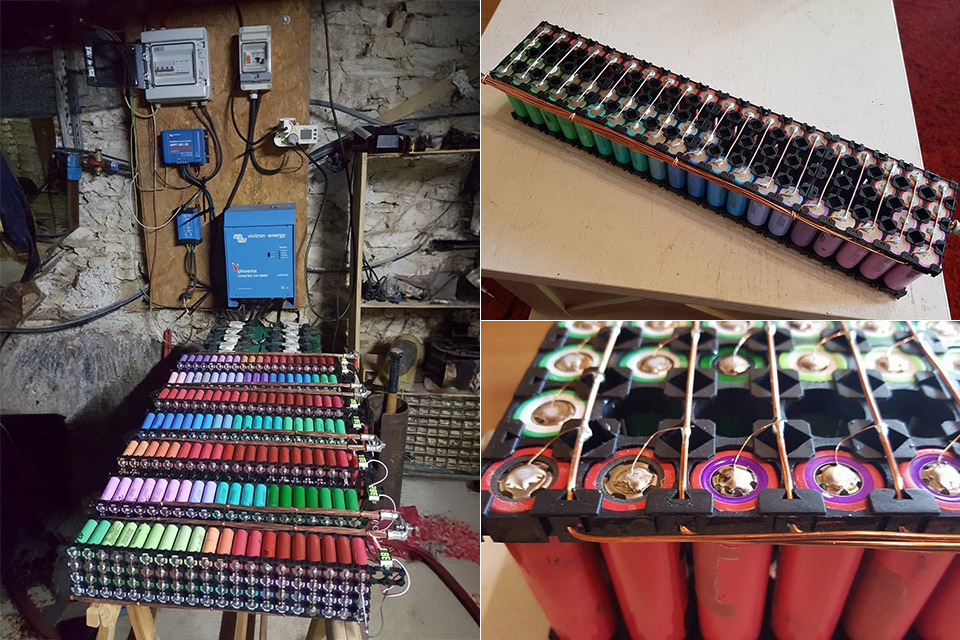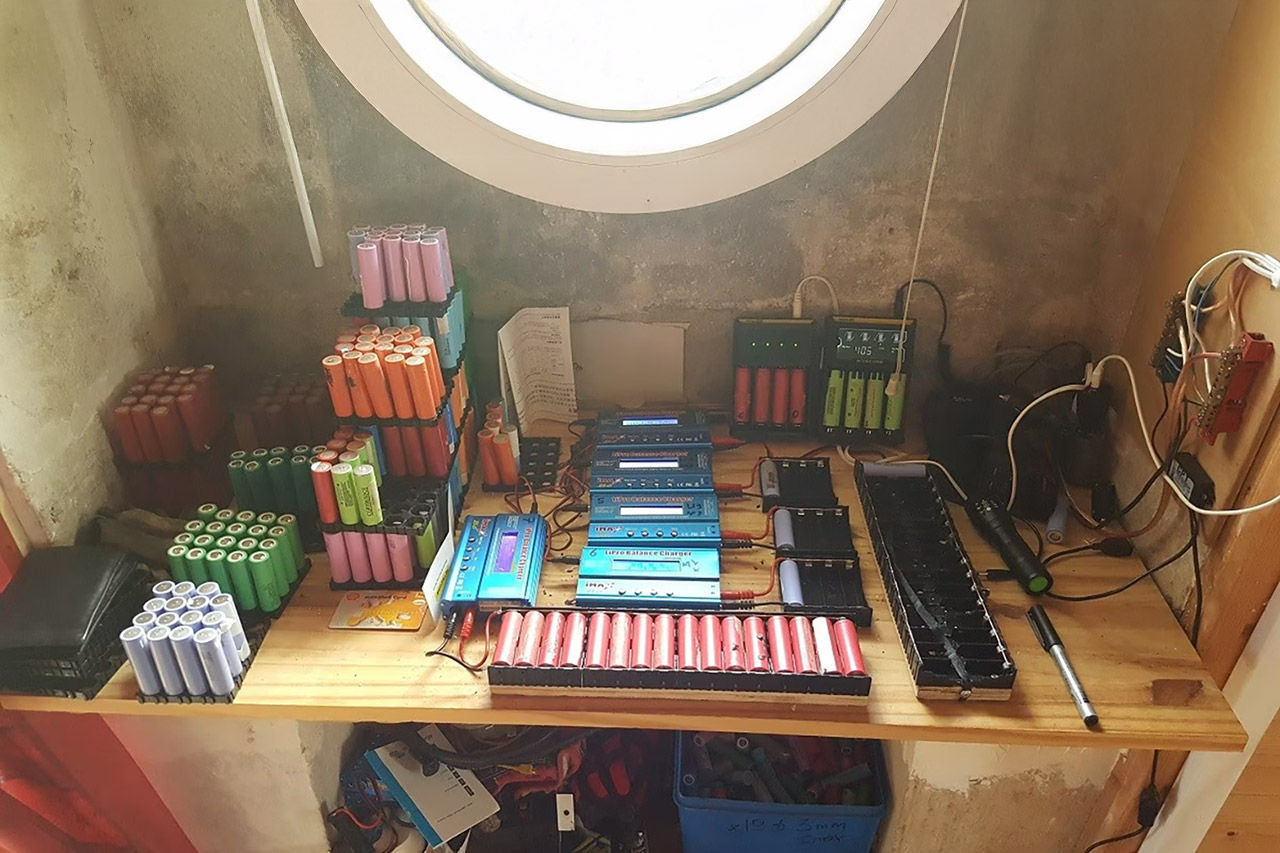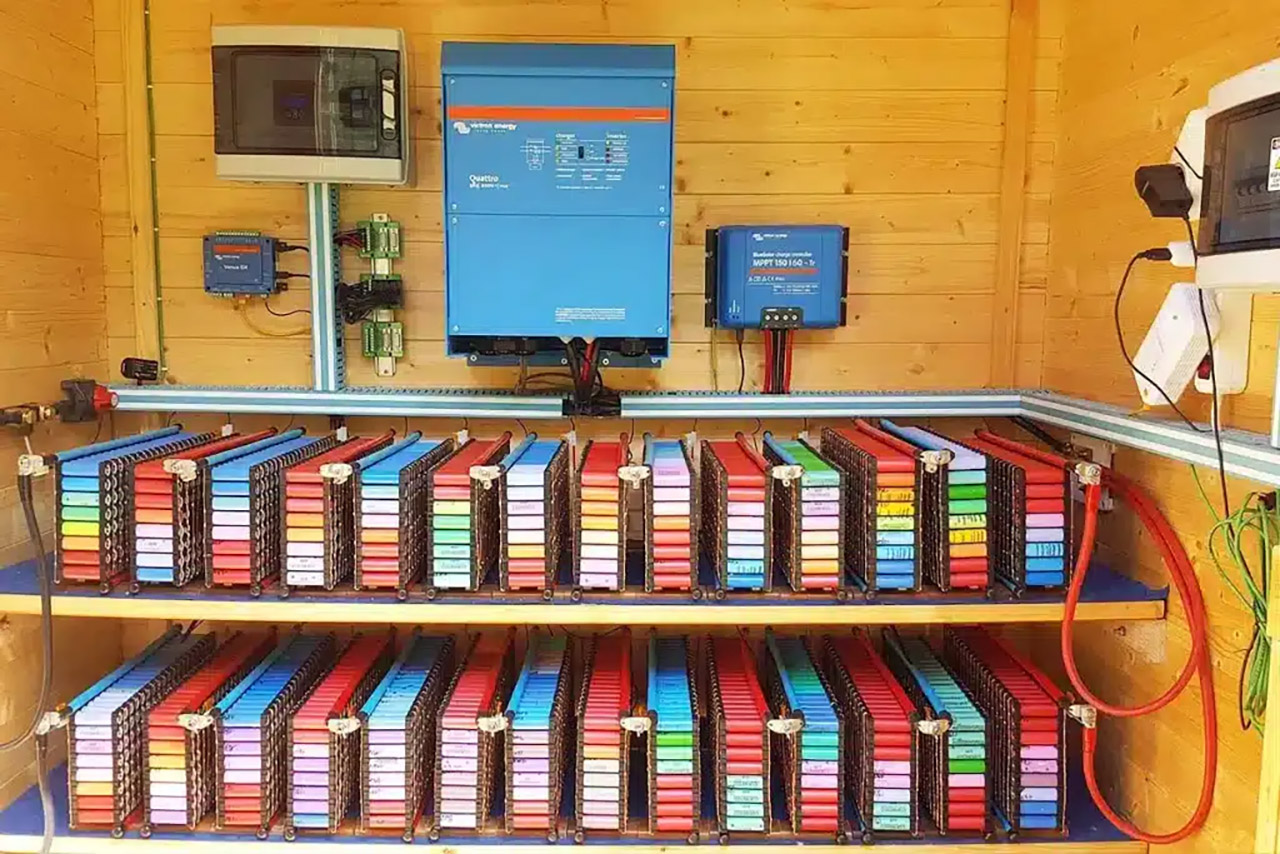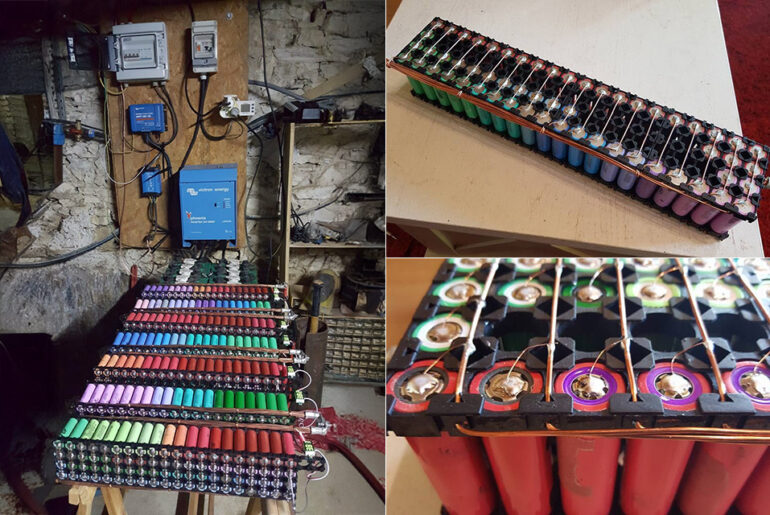
Glubux settles into a quiet corner of the internet, where hobbyists frequently tell stories about discovering hidden gems in old tech and realizing their fantasies of living off the grid. Back in late 2016, he posted an update on the Second Life Storage forum, informing people about the commencement of his project. He had 1.4 kilowatts of solar panels on his roof, an old forklift battery, a charge controller, and an inverter, which was roughly the starting point. A few months earlier, he had started collecting various varieties of outdated laptop batteries. By November, he had around 650 of them. just one aim in mind: build a system that provided everything his house needed without using a single watt from the grid.

Those old batteries started to give him headaches almost straight away. Each pack had cells of different ages and conditions so when connected together some just drained away faster. The power didn’t flow evenly like water dripping from a bucket with many holes. But Glubux wasn’t deterred, he opened each pack one by one, pulled out the individual cells and tested them to see which ones were still good. He then divided the best ones into chunks of about 100 amp-hours. He wired them into racks that fit into a shed he built about 50 meters from his house; that shed became the heart of the whole operation, a solid box that only housed the batteries, controllers and inverters away from the daily grind.
- Triple 100W USB-C Ports for Multi-Device Charging: Ideal for laptop users, this 25,000mAh power bank features three 100W USB-C ports for simultaneous...
- 25,000mAh for Long-Haul Power: Tackle week-long trips or extended camping with 25,000mAh capacity and ultra-fast recharging, reaching 30% in just 22...
- Dual Built-In Cables for Travel: Features two USB-C cables, one extendable up to 2.3 ft with 20,000 retractions, and another at 0.98 ft cable that...

The next step was to expand and expand strategically. Glubux added another 24 solar panels, each 440 watts. The lot now charges the batteries even on the shortest winter days. He started collecting laptop packs and soon had over 1,000. Stripping them down and sorting the cells by capacity has become routine: remove the case, sort the cells and slot them back in. Since the whole thing has been running, none of the cells have failed. It all works on 24 volts and feeds a 3kva converter, which boosts the power to what the house requires. The lights turn on and appliances run smoothly, all powered by the sun’s daily gift, stored in batteries that were previously used for late-night streaming sessions.

It’s been over 8 years since the first post, and the system has never failed. Grid blackouts occur outside, but Glubux’s dwelling remains illuminated. He picked long-lasting components, such as Victron controllers and inverters, to withstand the load day after day. The forklift battery from the early days is still in the mix, acting as a strong anchor to smooth out the initial testing. When the clouds sweep in for days, the batteries stay stable and discharge stored energy until the sun returns.
[Source]







